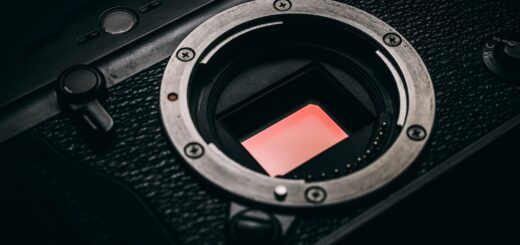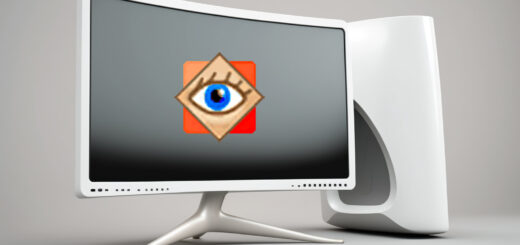Sensor Size and Crop Factor

Just to briefly recap on the earlier related post, we had discussed how sensor sizes affect the camera and its operations.
We will look into depth into one of the key aspects of different sensor sizes, which is known as crop factor.
Basic concepts
Before diving into the crop factors, there are some basic concepts that require some familiarization.
Be sure to go through these thoroughly as they will be referred to frequently when we go into the crop factor concepts.
This is a lens specification, and indicates where the nodal point of the lens is at with respect to the sensor plane when focused at infinity.
The shorter the focal length, the closer the nodal point is to the sensor, the smaller objects at infinity are viewed.
Conversely, the longer the focal length, the further away the nodal point is, and the larger objects at infinity are viewed.
The angle of view is how much of a scene an image sensor sees with an attached lens.
The angle of view is affected by two key factors – the image sensor size, and the focal length of the lens.
This is normally indicated by a f-number (e.g. f/2.8, f/4) on the lens.
This f-number is a ratio of the focal length of the lens to the size of the entrance pupil of the lens.
For example, a 100mm f/2 lens will have an entrance pupil of 100/2 = 50mm, and a 100mm f/4 lens will have an entrance pupil of 100/4 = 25mm.
Therefore, the smaller the f-number, the larger the size of the entrance pupil.
The depth of field is the region in front and behind of the plane of focus whereby the subject is in reasonable sharp focus.
Theoretically only the plane of focus will be sharp, but with aperture changes the DOF would vary and have reasonable sharpness as perceived by us.
This is the minimum distance from the sensor plane where the lens can focus properly and produce a sharp image at.
The distance calculated from the front of the lens to the subject is called Working Distance.
Not to be confused with focal length of the lens.
This is an indication of how much magnification can be achieved when a lens is focused at its MFD.
It can usually displayed as a multiplier (e.g. 0.2x, 1x) or as a ratio (e.g. 1:5, 1:1).
A reproduction ratio of 0.2x or 1:5 means that a 10mm object will be projected on 2mm of your image sensor; or in other words, the image projected is 0.2x its true size.
Similarly, a 1x or 1:1 ratio would mean that a 10mm object is projected onto 10mm of the image sensor, giving it a perfect reproduction of its true size.
What is crop factor?
A crop factor is a ratio of the dimensions of an image sensor as compared to that of a reference sensor, which is often the full-frame 35mm film-size sensor (36mm x 24mm).
This multiplier can then used to determine equivalent values used when lenses are mounted on sensors of different sizes, to give a visualization of how a lens and camera sensor size would be capturing the scene.
The common crop factors are:
- Full-frame : 1x (reference sensor size)
- General APS-C : 1.5x
- Canon APS-C : 1.6x
- Micro 4/3 : 2x
Note 1: Canon has a slightly cropped full-frame sensor, called APS-H, and its crop ratio is 1.3x
Note 2: General APS-C actually has a crop ratio close to 1.52x, but for simplicity 1.5x is usually used
How to use crop factor?
Remember that the angle of view of a scene is dependent on both the focal length and the sensor size, so having a crop factor in place is very helpful in visualizing how the scene would look like when used with a different sensor size.
First off, let’s visualize how mounting the exact same lens would result in different angles of view.
A 50mm lens mounted on a full-frame camera will have an angle of view of 47º at infinity.
Mounting the same lens on an APS-C camera (1.5x crop factor), the resultant angle of view is 31.3º.
This is expected, as mounting the same lens on a camera with a smaller sensor size means that as the outer parts of the image projected is not captured, only the center portion of the image is being recorded, hence less of the image is seen (narrower angle of view).
And what is interesting about the resultant angle of view is that, this resultant angle of view is actually how a 75mm lens would view the scene on a full frame camera.
Hence in summary, we can use crop factor to visualize how the angle of view would turn out as compared to a reference sensor size by calculating the equivalent focal length.
While we can visualize how the angle of view changes by applying the crop factor to focal lengths to determine equivalent focal lengths, you cannot apply the crop factor directly to the angle of view, as the formula to calculate the angle of view has an arctan involved.
The effect of the arctan is that at lower focal lengths, the relationship of the focal length and angle of view loses its linearity – that is to say doubling of a focal length does not equate to halving of the angle of view.
However at longer focal lengths, this relationship is more linear, hence doubling a focal length results in halving of the angle of view.
This is one major reason why we use crop factors on the focal length and not the direct angle of view.
Another use of crop factor is to determine the equivalent depth of field when using different sensor sizes.
Imagine you are taking a photo of a subject 5m away from you, and you are using these settings – 50mm lens at f/2 on full-frame.
Now if we set the same settings on an APS-C camera (that is, 50mm lens at f/2) and take a shot, we know that by using the crop factor on the focal length, the resultant image would look like an image shot at 75mm on full-frame.
However, as we know that the entrance pupil of the lens does not change (50mm/2 = 25mm), the resulting image would actually look like it was shot at an aperture of f/3 (75mm/25mm), which is also in fact a crop factor ratio of the initial f-number (f/2 x 1.5 crop ratio = f/3)
Hence in summary, using the crop factor, we can visualize what the equivalent DOF is by applying the crop factor to the f-number.
The depth of field of a subject at identical magnification on the same sensor size will always be constant at the same f-number, regardless of the focal length used!
The key this is identical magnification – that is to say if you change to a longer focal length, you would have to stand further away from the subject to frame it to exactly the same magnification.
Background blur on the other hand, is highly dependent on focal length (and angle of view), so even though the DOF is exactly the same, the image feels different due to the background influences and the perspective changes when moving closer or further away from the subject.
This concept is very useful to to know when choosing lenses for maximizing bokeh or background blur without sacrificing critical DOF sharpness!
Lastly we can also use crop factor to determine equivalent magnification ratio, which has a direct linear relationship with the sensor size.
If you use a true macro lens (1:1 magnification ratio) at its MFD, on the full frame a 36x24mm subject will be projected true life size onto the 36x24mm sensor.
Using the same lens, at the same distance, the lens still projects the same 36x24mm subject onto the sensor. However as the sensor is smaller, it can only capture the middle 24x16mm portion, and the outer perimeter is lost.
In terms of the lens’s reproduction ratio specifications, it is still 1:1, since the middle of the 36x24mm subject (which is 24x16mm) is projected true life size on the sensor (24x16mm).
However if we look at the resulting image, it seems as though the lens at MFD only captures 24x16mm of the subject, hence the concept of equivalent magnification ratio is 1:1 x crop factor = 1.5:1 (or 1.5x magnification).
Common Myths and Questions
No. A lens’s focal length is its innate specification, which does not change regardless of what camera/sensor you pair it with.
Its angle of view changes depending on the camera and sensor size, and to create a common ground for people to discuss we use crop factors to calculate the views from equivalent focal length.
No. The aperture (f-number) is a ratio of the focal length to its entrance pupil diameter, and as such is an innate specification to the lens.
To put this to test easily, you can take an image of a subject at the same distance, using a lens set at the same focal length, aperture, shutter speed, and ISO, and the resulting image would be in identical brightness regardless of sensor size.
However what differs is the angle of view (focal length x crop factor) and the resultant DOF (DOF of a lens of f-number x crop factor).
Hence, we use crop factor to only determine the effective DOF at an equivalent aperture for comparison purposes.
Yes, indeed it is the same!
The idea of crop factor is essentially how much of a sensor size difference there is as compared to a reference sensor, so if your sensor is smaller than the reference sensor (APS-C vs full-frame for example), then cropping only the center of the full-frame image will result in how an APS-C sensor will view it.
And by doing this, you will also notice even though the focal length of the lens and the aperture it was shot at was not changed, there is a change in the angle of view and the apparent DOF.








